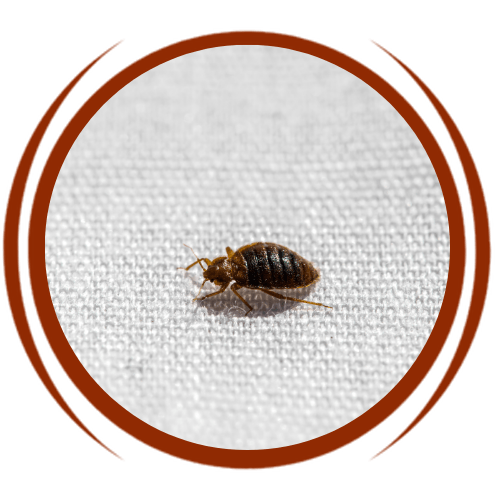
Bed Bug Exterminator

Bed Bug Exterminator
Bed Bugs Are Back
Recently Bed Bugs have made a significant comeback in the U.S. and elsewhere in the world. We say they’ve made a “comeback” because their numbers had declined significantly after WWII — primarily due to the development of pesticides such as DDT. What has led to this resurgence? Many things, including reductions in pesticide use, more frequent travel — domestic and international — and a general lessening of vigilance to prevent them.
Unfortunately, no matter the reason, they are once again on the rise, appearing in hotels, homes, dorms, apartments, schools, and shelters. They can even be found in offices, public transportation, hospitals, libraries, theaters, and wherever people are.
What Are Bed Bugs?
They are tiny parasites that drink the blood of animals and people, primarily while they sleep. They are wingless, reddish-brown insects, and their size can range from 1-to 7mm (approximately the size of a pinhead). Once they feed on blood, they can survive for several months before feeding again.
Facts About Bed Bugs:
- 97% of pest-control experts have been contacted about Bed Bugs in the past year.
- They are easily misidentified as other pests, such as fleas or cockroaches.
- Infestations seem to peak in the summer, coinciding with an increase in travel.
- The most common places for infestations are homes (91%), condominiums/apartments (89%), and motels/hotels (68%).
- While most often found in bed frames and couches, they can also be found in bedside lamps, purses, school buses, airplanes, wheelchairs, and stuffed animals, among many other places.
How Do You Know If You Have A Bed Bug Problem?
While rust-colored dark spots, fecal matter, shed skins, and egg cases in cracks and crevices around beds raise the possibility of an active infestation, only actual observation of the bugs can confirm one. You should consult a professional to help identify and exterminate Bed Bugs from your home.
Why Should You Be Concerned About Bed Bugs?
Their bites typically cause an allergic reaction, resulting in swelling, discomfort, itchiness, and pain. They have also been shown to transmit diseases such as Chagas Disease (also known as American Trypanosomiasis). Finally, scratching the itchy, painful bites can lead to other medical problems, including infection.
Dealing With A Bed Bug Infestation
Getting rid of Bed Bugs on your own is very difficult. Identifying them is challenging, as is dealing with the problem effectively. You may think you’ve handled the issue, but the range of the infestation is usually worse than you thought, and the problem will typically flare up again rather quickly. Stopgap measures such as encasing mattresses in plastic may temporarily lessen the issue but, in the end, do little to solve the underlying infestation.
The Best And Most Effective Solution To Exterminate Bed Bugs
Bed Bugs are among the most difficult pests to deal with; it is difficult to identify the problem and deal with it comprehensively. The most effective way is to call a pest control professional. At Pest Patrol, we have the experience and knowledge to identify a Bed Bug infestation and eliminate it efficiently, comprehensively, and reliable. If you think you may have a problem,
contact us, and we can help.
All Rights Reserved | Pest Patrol